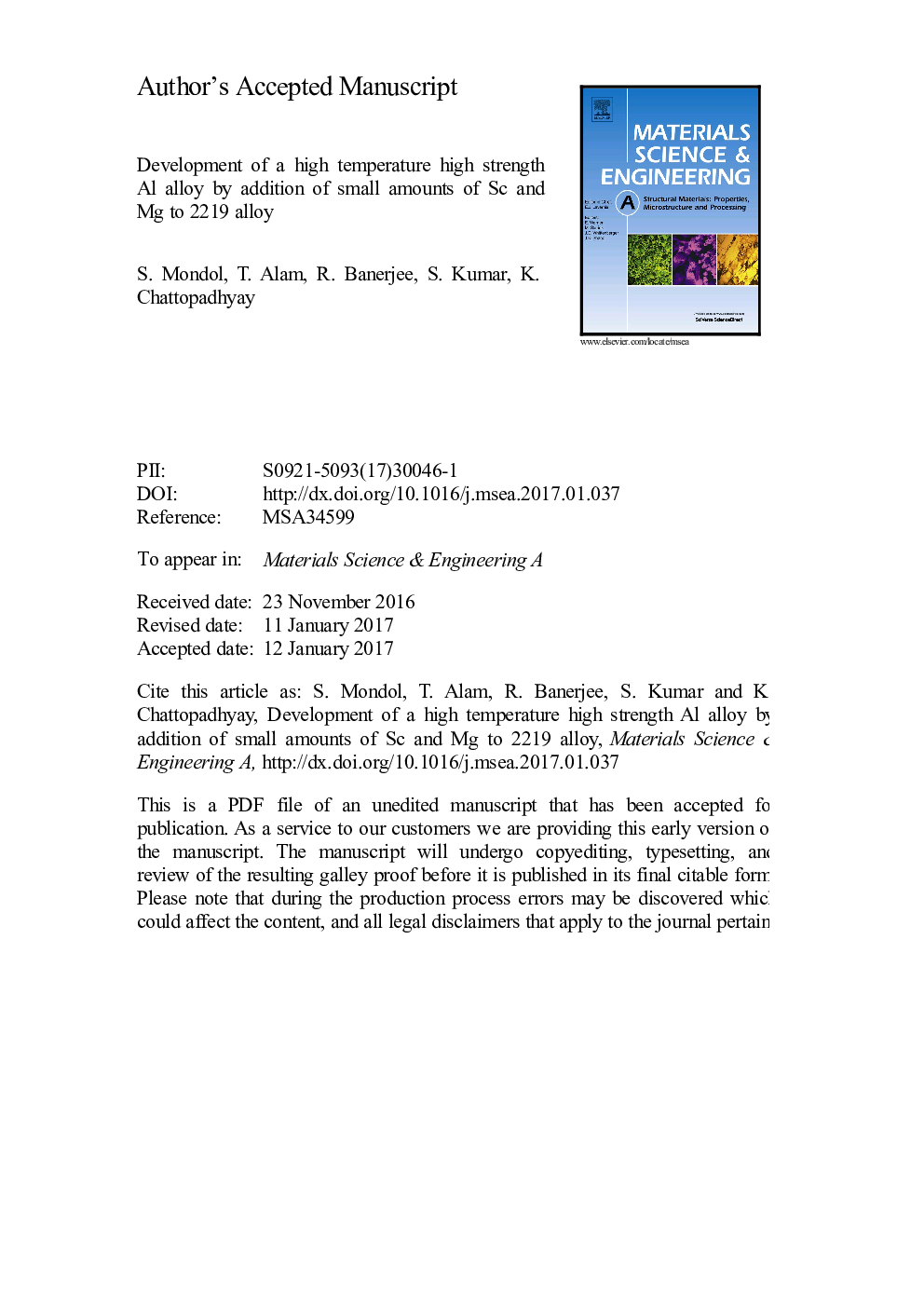| Article ID | Journal | Published Year | Pages | File Type |
|---|---|---|---|---|
| 5456258 | Materials Science and Engineering: A | 2017 | 33 Pages |
Abstract
The paper reports a significant improvement in tensile properties, in particular at 200 °C, of commercial 2219 Al alloy by addition of small amounts of Sc (0.8 wt%) and Mg (0.45 wt%), and employing copper mould suction casting followed by natural ageing and cold rolling. Microstructural examination and measurement of hardness were performed in order to explain the effects of Sc and Mg at each processing step. It is found that the remarkable improvement of room temperature strength occurs due to fine grain size, Al3Sc and Al3(Sc,Zr) dispersoids, GP zones on {100} and {111} planes, and work hardening. On exposure at 200 °C, the GP zones transform primarily to θⲠprecipitates and a few Ω precipitates. Sc and Mg atoms segregate at the θâ²/matrix interface, which suppress the coarsening of θⲠprecipitates and make them stable at higher temperatures. Thus, the work reports extremely high 0.2% proof stress of 542 MPa at room temperature, 378 MPa at 200 °C and 495 MPa at room temperature after 200 h exposure at 200 °C accompanied by reasonable ductility. Theoretical yield strength is calculated on the basis of the observed microstructure and is found to be in good agreement with the experimentally obtained value.
Related Topics
Physical Sciences and Engineering
Materials Science
Materials Science (General)
Authors
S. Mondol, T. Alam, R. Banerjee, S. Kumar, K. Chattopadhyay,
